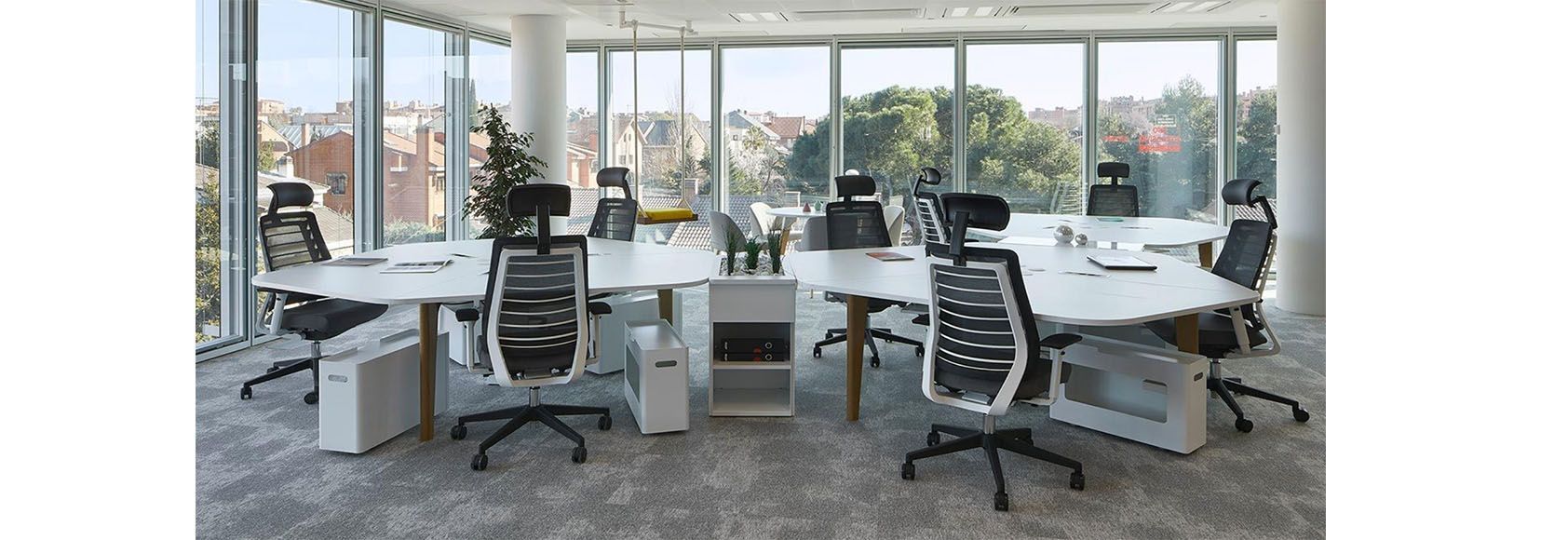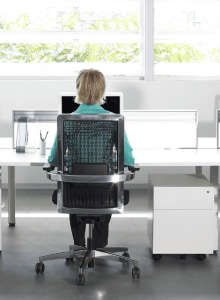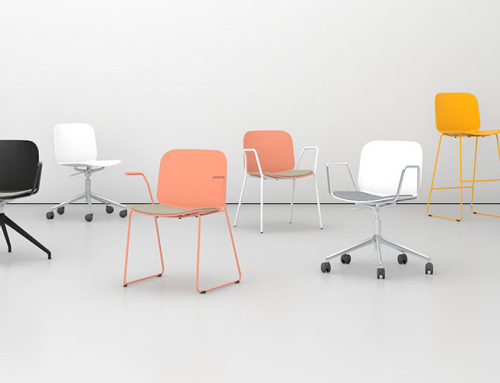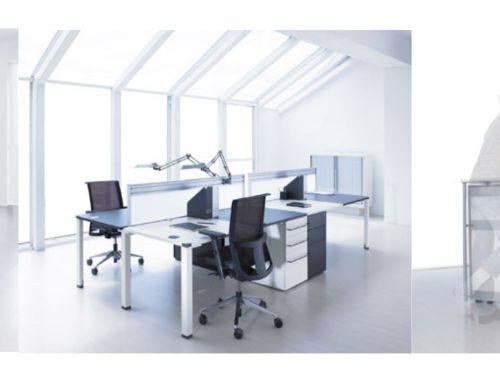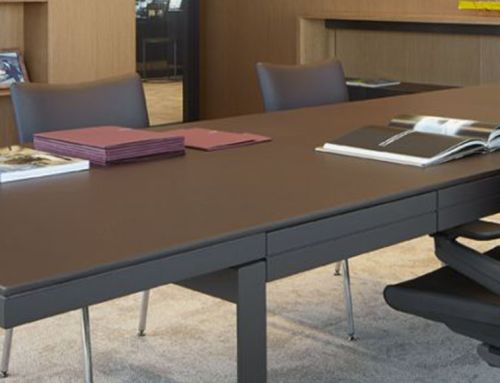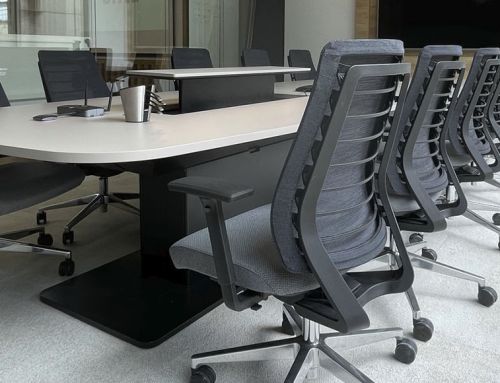Office work has led to a growing incidence of occupational diseases, as a consequence of the adoption of incorrect postures and the excessive sedentary lifestyle typical of this type of work. Therefore, in this post we will talk today about how to avoid them and the requirements that office chairs for people with back problems must meet.
30% of workers complain of back pain (80% have suffered some episode of back pain in their life), 17% of muscle pain in arms and legs and 45% declare that they work in painful positions, according to studies by Ofita.
Sitting correctly is very important, but to avoid problems, it is also important to change your position or get up from time to time. And of course having ergonomic office chairs for people with back problems in companies or at home.
Back pain is one of the most common causes of absenteeism.
For example, an estimated 16 percent of casualties in the United States are caused by back discomfort. According to the “Back website” page, “if sick leave due to back pain lasts up to 4 weeks, specific measures must be taken, since workers who reach this period have between 10 and 40% (depending on the areas) of possibilities of continuing to leave 1 year later. And practically none of those who suffer a sick leave of more than 1 year can return to lead a normal, active and pain-free life, regardless of what their original diagnosis was or what treatments they received or are applied later”.
Office-related causative factors
Causing factors of back pain that are closely related to office work: A very intense effort; the repetition of excessive efforts; the adoption of inappropriate postures, which can overload the muscles or structures of the spine; stress; dissatisfaction with the job and carrying loads.
And especially, the excessive sedentary lifestyle. It is one of the most common causes of problems in the spine. Disorders increase if the sitting position is habitually inappropriate or forced. A relaxed trunk and curved shoulders, for example, do not provide adequate support for the spine and cause tension in the neck muscles and high lats.
Correct posture with a good back chair
Sitting is one of the most common postures in everyday life. When maintaining this position, you must take into account many factors, from the height of the chair and its backrest, to the placement of the computer or the design of the table.
You also have to be careful when sitting down and getting out of the chair. Sit controlled, do not collapse. While you are sitting, support yourself with your arms on the armrests or on your thighs, keeping your back straight, and sit as far back as possible in the chair, supporting your spine on the backrest.
To get up, support yourself with your arms on your armrests or on your thighs and keep your back straight or slightly arched back, not bent, as you stand up. Remember, also, that seated we must avoid partial turns. The right thing to do is to turn your whole body at the same time.
In this previous post we already defined the correct posture to sit in an office chair and take care of our back. We remember 3 basic points : The first is to keep the spine upright, since in this way it presents its natural open S shape, and the trunk leaning on the back of the chair. The second, adopt a posture as stable as possible; that is to say, that we are not slumped in our seat. The third, while we are sitting we must keep the legs slightly open and the two plants resting on the ground.
Office chairs for people with back problems
The best ergonomic chair for cervical problems is one that adapts to the user, allowing him to adopt a correct posture at all times. This means that it facilitates sitting in active movement.
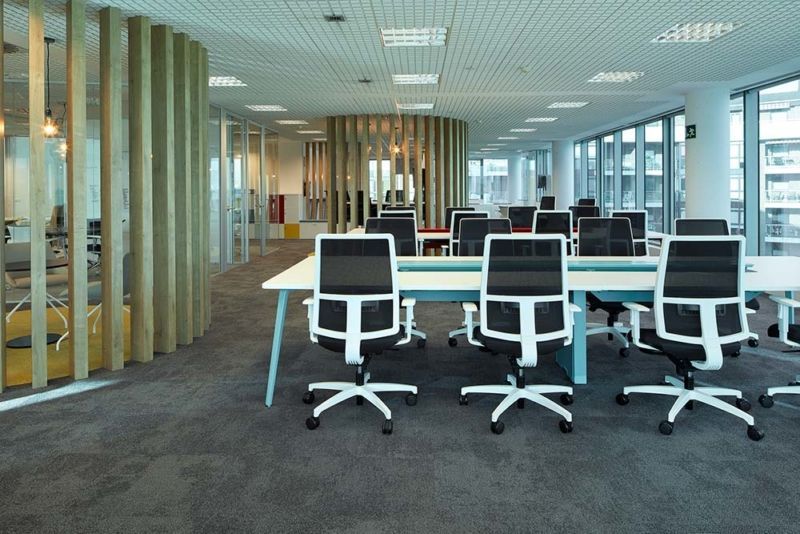
Hara chair by Ofita
The special chairs for the back are ergonomic, therefore, they avoid pain and illness, and also create healthy psychological states: they achieve greater efficiency in the development of work, reduce fatigue and increase the general well-being of its user and their motivation in the job.
According to the Ofita study, Ergomania in the office , prepared with their own data and from the IBV, in office chairs the highest frequency of complaints occurs in the availability of the arm rests . Second (in order of frequency of complaints) comes the comfort of the backrest.
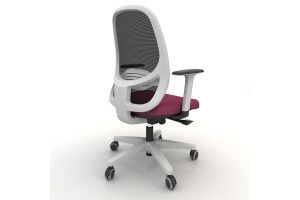
Like chair by Ofita
The design of ergonomic chairs for cervical problems
The special chairs for the back can adapt to the physical complexion of the user and the activity he performs, allowing him to adopt a correct posture at all times.
So, good chairs for the back must meet the following requirements:
- That it is adaptable to the anthropometric needs and characteristics of 90% of people.
- The back of the chair must allow the back to be properly supported, adapting to the curves of the body. It must allow us to adopt an upright posture, and in particular the support of the lumbar area is especially important. Likewise, the possibility of adjusting the height of the backrest is recommended. Many office chair users complain of too low backrests and also 30% of office chair users say they do not use the back of the chair.
- A good back chair should allow for a dynamic sitting position. The chair must adapt to the user’s movements and different activities. In this sense, special chairs for the back that have systems that allow the synchronization of seat / back movements are recommended.
Other requirements for special back chairs
- The adjustment systems must be safe to handle and accessible from
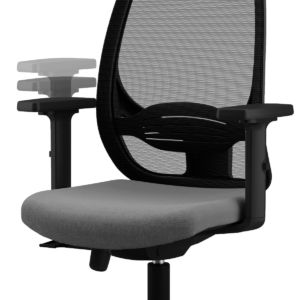
the sitting position, without requiring too much effort to operate them. They should not be activated unintentionally.
- Have armrests . Good arm support will reduce the feeling of fatigue in the cervical area. Its length must be somewhat less than that of the seat so that it does not prevent us from bringing the chair closer to the table.
- The seats must not be excessively soft.
You can see more complete information about the requirements of a good ergonomic chair for cervical problems in this other post from Ofita .
The main mechanisms of the special chairs for the back
Among these mechanisms, we underline the importance of these 4: Seat height adjustment; armrest height adjustment; height adjustment of the backrest, so that the back is well supported in its entirety and the Synchro mechanism. This mechanism provides a synchronized movement between the backrest and the seat, so that the backrest accompanies the movements of the back when desired, and in this way always maintain the support of the lumbar area.
Adjust your chair for the back
Do not use your chair as it is delivered to you. Sit in the chair and lean back until your lower back is resting on the backrest. Adjust the seat height until your feet are on the ground correctly. If you can’t, request a footrest . The table should be at elbow height or slightly higher. Adjust the height of the armrests, the height of the backrest and its inclination.
Discover here the best office chairs from Ofita for people with back problems
… Because Ofita is Quality of Life at Work . And that is why we think that offices should be designed for people, and that their interiors should be ergonomically designed in such a way as to increase the comfort of the workstations, increasing in turn the productivity of the company and its people.
